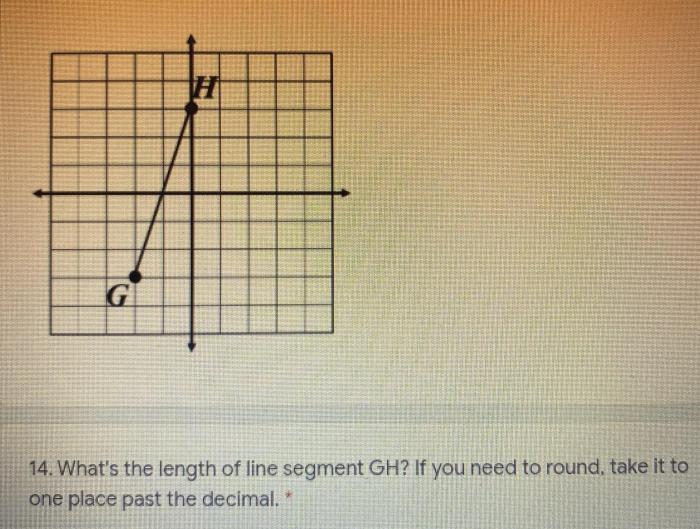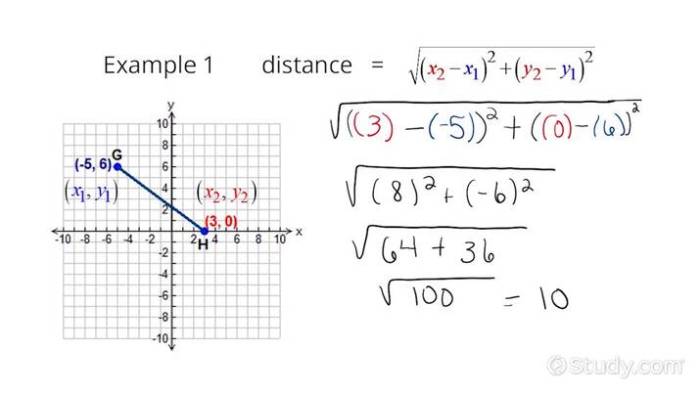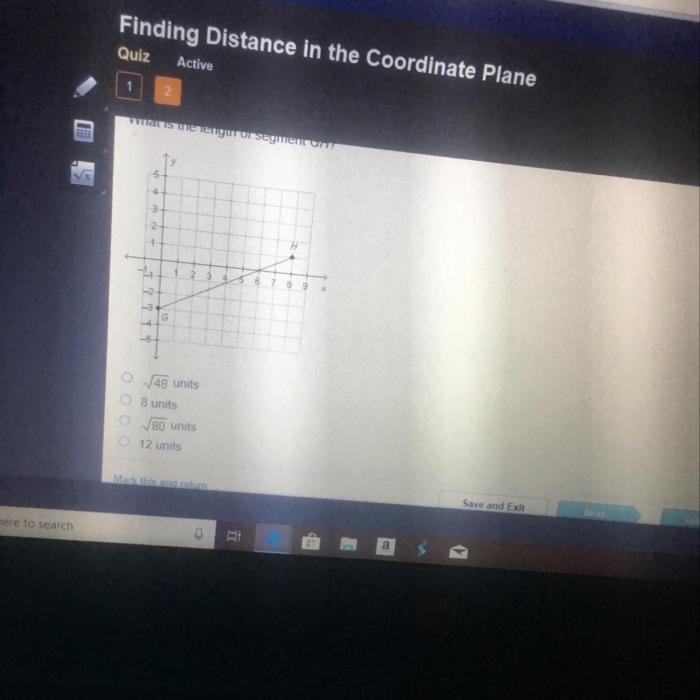Find the approximate length of segment gh on the graph – In the realm of graphing, determining the length of a segment is a fundamental skill that unlocks a deeper understanding of data visualization. This guide delves into the intricacies of finding the approximate length of segment GH on a graph, equipping you with the knowledge and techniques to navigate this mathematical terrain with precision and confidence.
Understanding the scale and units employed on the graph is paramount. It serves as the foundation for accurate measurements, enabling you to interpret the graph’s data with clarity. Various methods exist to measure segment GH, including the use of a ruler or a protractor, each offering its own advantages and considerations.
Measuring Line Segments on a Graph

Measuring line segments on a graph is a fundamental skill in various fields, such as mathematics, science, and engineering. To accurately determine the length of a segment, it is crucial to understand the concept of scale and the methods available for measurement.
Determining the Scale of the Graph, Find the approximate length of segment gh on the graph
The scale of a graph refers to the relationship between the actual distance represented on the graph and the corresponding distance in the real world. It is typically expressed as a ratio, such as 1 cm : 100 km. To determine the scale, identify the units used on both the horizontal and vertical axes and calculate the ratio between them.
- For example, if the horizontal axis represents distance in kilometers and the vertical axis represents height in meters, and the graph has a scale of 1 cm : 100 km, then 1 cm on the graph corresponds to 100 km in the real world.
Measuring Segment GH Using a Ruler
Using a ruler is a simple and direct method for measuring segment GH on a graph. Align the ruler with the segment, ensuring that the 0 mark of the ruler coincides with one endpoint of the segment. Read the measurement at the other endpoint to obtain the length of segment GH.
Potential sources of error when using a ruler include parallax error (misalignment of the ruler with the segment) and estimation error (inaccurate reading of the measurement).
Measuring Segment GH Using a Protractor
A protractor is used to measure segment GH when the graph is not drawn to scale. Align the protractor’s center with the vertex of the angle formed by segment GH and the horizontal axis. Measure the angle between the segment and the horizontal axis.
The accuracy of this method depends on the precision of the protractor and the ability to accurately align it with the segment. It is less precise than using a ruler but can be useful when the graph is not drawn to scale.
Calculating the Length of Segment GH
If the angle measured using the protractor is θ and the scale of the graph is s, the length of segment GH can be calculated using the formula:
Length of GH = (s × θ) / 360
- For example, if the angle measured is 60 degrees and the scale is 1 cm : 100 km, then the length of segment GH is (1 cm × 60 degrees) / 360 = 0.17 cm, which corresponds to 17 km in the real world.
FAQ Section: Find The Approximate Length Of Segment Gh On The Graph
What factors influence the accuracy of segment length measurement?
The accuracy of segment length measurement is influenced by the precision of the measuring tool, the scale of the graph, and the alignment of the tool with the segment.
Can I use a digital protractor to measure segment GH?
Yes, you can use a digital protractor to measure segment GH. Digital protractors offer precise angle measurements and can be particularly useful when the graph is not drawn to scale.


